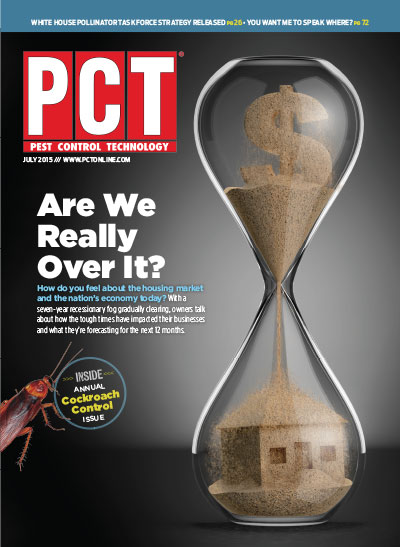Editor’s Note: The following article originally appeared on Mike Merchant’s blog, “Insects in the City,” which can be found at http://insectsinthecity.blogspot.com. The blog offers readers news and commentary about the urban pest management industry. This article pertains specifically to Texas regulations and your state may have different or additional requirements.
 If you own or work for a pest control business, you know that it’s no fun being the subject of an inspection by state regulatory officials. So many things can go wrong! To make matters worse, if you mess up, chances are that you’ll see an inspector again soon, much sooner than if you pass with flying colors.
If you own or work for a pest control business, you know that it’s no fun being the subject of an inspection by state regulatory officials. So many things can go wrong! To make matters worse, if you mess up, chances are that you’ll see an inspector again soon, much sooner than if you pass with flying colors.
Fortunately, you don’t need to have a bad inspection. At a recent Structural Pest Control Advisory Committee meeting, the good folks at the Texas Department of Agriculture provided a list of the most common mistakes found by regulatory inspectors in 2014 during routine business inspections. As you’ll see, most of these mistakes relate to paperwork and record keeping — stuff that’s relatively simple to correct. It might be a good time to use these non-compliance lists as checklists to see where your team stands. Take the test and see if you pass (remember, regulations may be different in your state):
Most Common Mistakes for Pest Control Businesses
1. Are the name and license of the person(s) applying pesticides or using devices recorded on use records stored at your business location? (21 percent failure rate)
2. Do your service report forms have a jurisdiction statement? (18 percent failure rate)
3. If you present a termite bid, do your forms include the required definitions for partial, pier and beam, slab construction, spot treatments, baiting systems and barriers? (16 percent failure rate)
4. Are all employees getting the necessary continuing education units (CEUs)? (15 percent failure rate)
5. When providing a termite bid are you providing your termite customers with a diagram, blueprint or building plat with a description of the structures to be treated? (8 percent failure rate)
6. When conducting WDI inspections for real estate transactions, does your paperwork record the name and affiliation of the person purchasing the inspection, as well as the owner/seller of the property? (7 percent failure rate).
7. For WDI reports, are you providing all customers with a properly labeled diagram of the structure inspected? (6 percent failure rate)
8. Do you provide all termite customers with the required termite treatment statement?
9. I’m surprised this failure rate isn’t higher: Do your service report forms record the purpose for which pesticides or devices were used (e.g., the target pest)?
10. Can you document on a verifiable training records form that your pest management technicians have received the required training?
About the author: Mike Merchant is an entomology specialist for Texas AgriLife Extension. Readers can contact him via email at mmerchant@giemedia.com.

Explore the July 2015 Issue
Check out more from this issue and find you next story to read.





